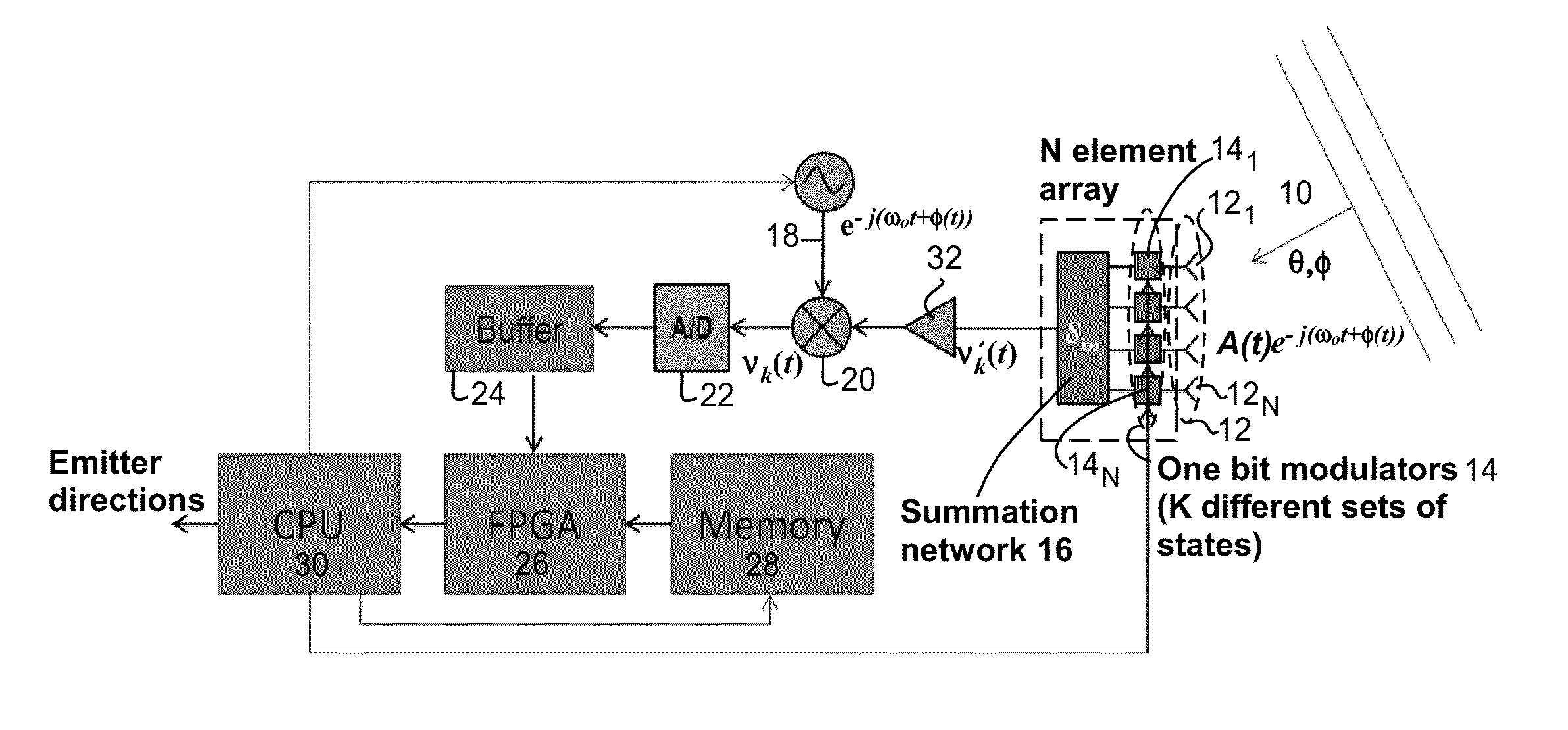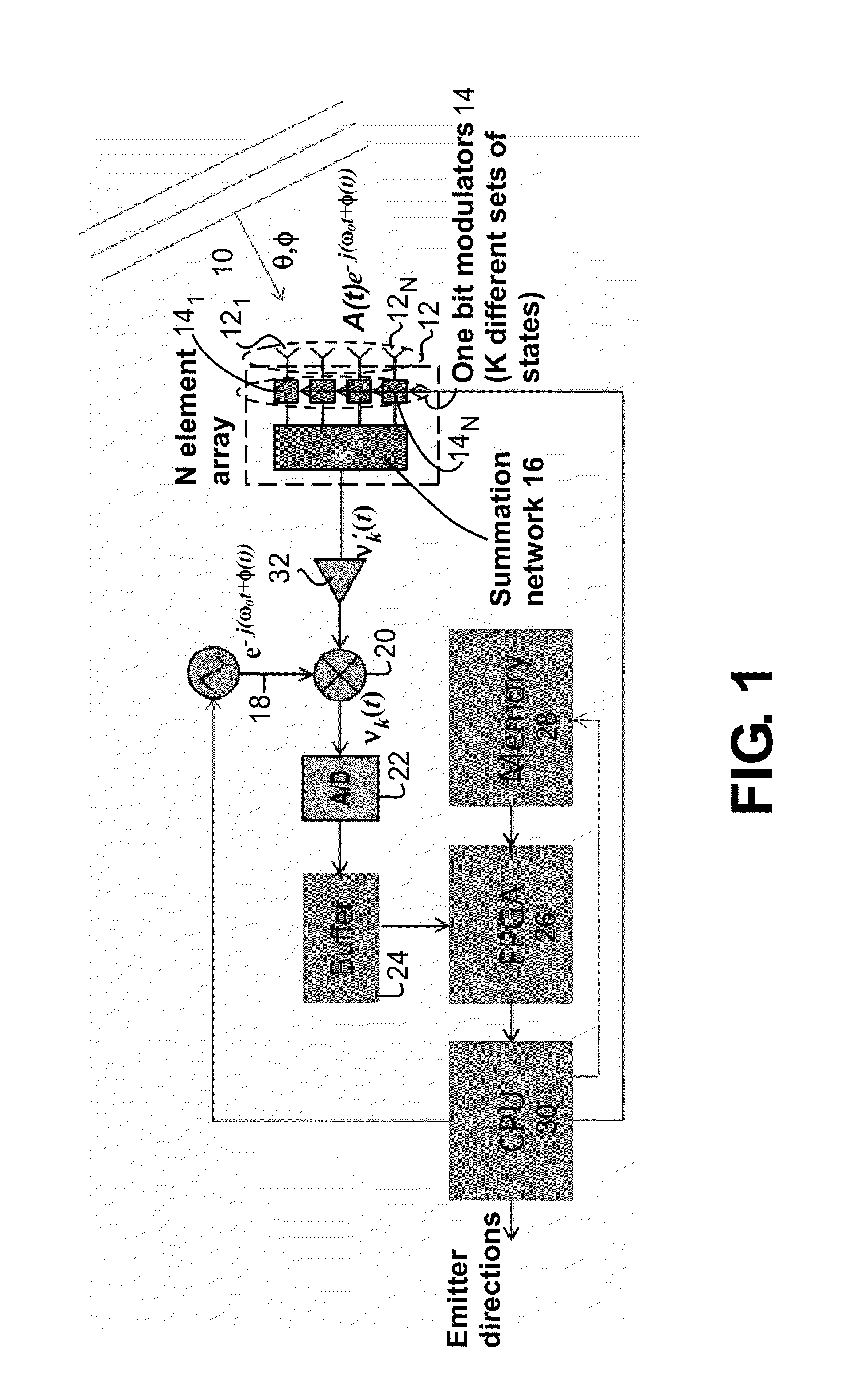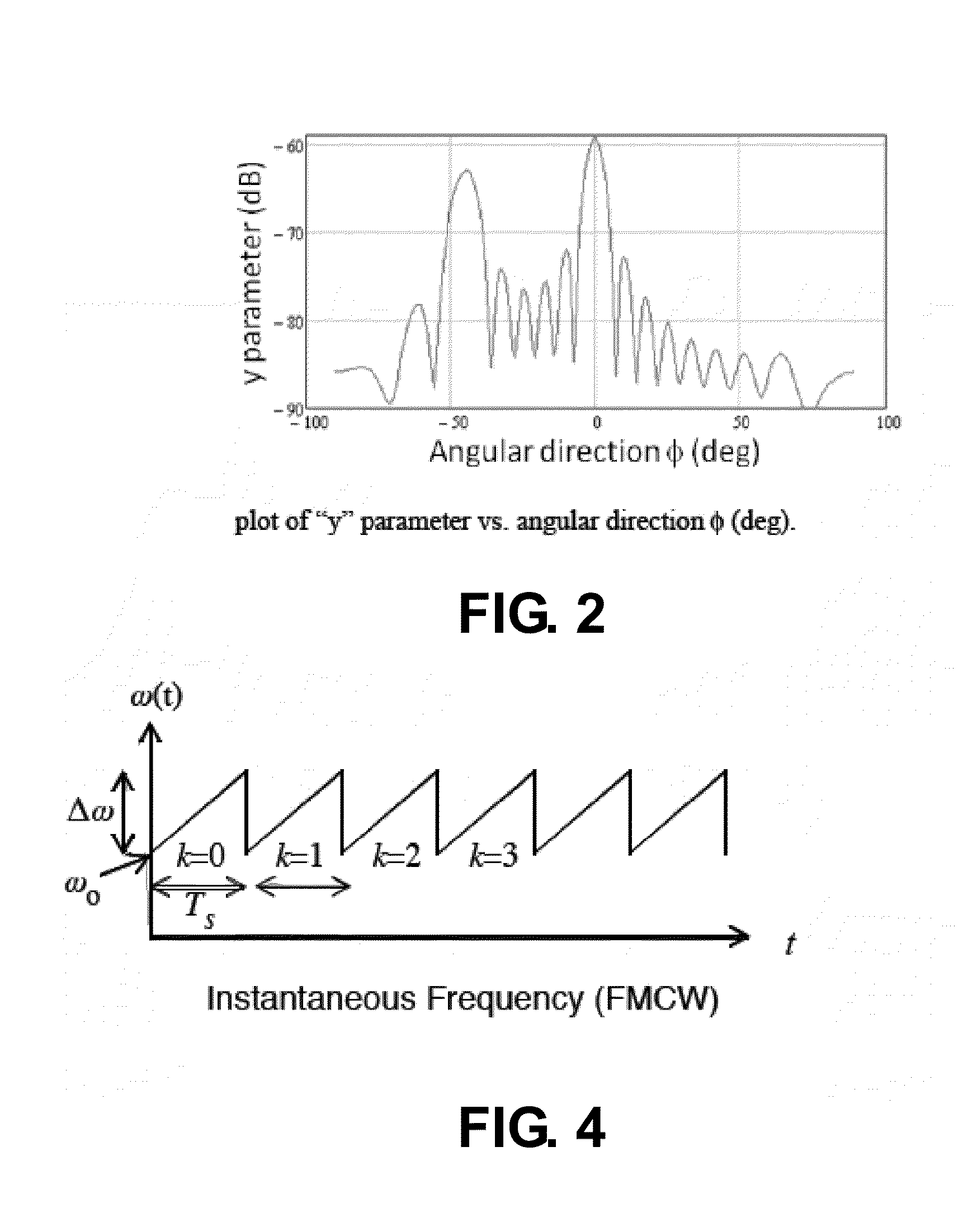Coded aperture beam analysis method and apparatus
a beam analysis and coded aperture technology, applied in direction finders, direction finders using radio waves, instruments, etc., can solve the problems of no one having previously proposed rf digital beamforming, the matrix of rf switches is expensive to implement, and the additional bits (below one bit) will not improve radar performance, so as to achieve the effect of low probability of interception
- Summary
- Abstract
- Description
- Claims
- Application Information
AI Technical Summary
Benefits of technology
Problems solved by technology
Method used
Image
Examples
Embodiment Construction
[0032]The coded aperture beam forming techniques disclosed herein may be used in a number of applications, including radio direction finding and radar, where a repetitive signal occurs. An embodiment of radio direction find using aperture beam forming techniques is first described and later several embodiments of radar using aperture beam forming techniques are described thereafter.
[0033]A “repetitive” signal f(t) is periodic in time and therefore satisfies f(t)=f(t+T), where T is the repetition period. Although this definition strictly applies only to signals of infinite duration (which do not occur in practice), the term “repetitive” is commonly used to describe signals where this condition applies over a finite period of time, but of significant duration for the system at hand. Repetitive signals may include pulsed radar waveforms, the carrier of many communication signals (e.g., AM and / or FM radio), and synchronizing signals transmitted by communication systems, all of which ex...
PUM
 Login to View More
Login to View More Abstract
Description
Claims
Application Information
 Login to View More
Login to View More - R&D
- Intellectual Property
- Life Sciences
- Materials
- Tech Scout
- Unparalleled Data Quality
- Higher Quality Content
- 60% Fewer Hallucinations
Browse by: Latest US Patents, China's latest patents, Technical Efficacy Thesaurus, Application Domain, Technology Topic, Popular Technical Reports.
© 2025 PatSnap. All rights reserved.Legal|Privacy policy|Modern Slavery Act Transparency Statement|Sitemap|About US| Contact US: help@patsnap.com



